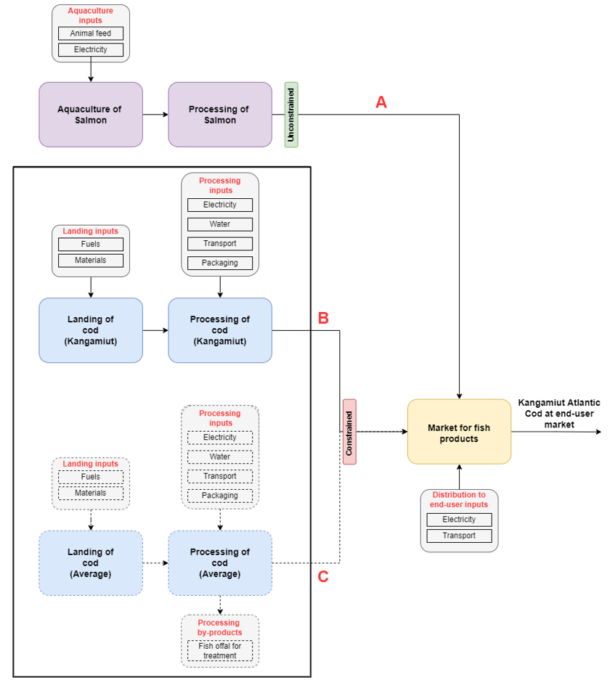Life Cycle Assessment (LCA) of Kangamiut Seafood Products
A cradle to consumer consequential life cycle assessment was conducted of 3 seafood products from Kangamiut Seafood, namely of: Atlantic cod, Cooked and peeled prawns and shell-on prawns. Additionally, screenings of carbon offsetting options were conducted.
The client
Kangiamut Seafood A/S – Multinational
Website
Our role
2.-0 LCA consultants led and managed all aspects of the project while the client provided foreground data. Project completed November 2021.
Cradle-to-consumer screening LCA of seafood
The purpose of the study was to carry out a high-level cradle-to-consumer screening LCA of the Kangamiut Seafood’s product portfolio, with focus on greenhouse gas emissions. Further, the purpose was to identify and investigate improvement options and to provide recommendations on how Kangamiut Seafood can reduce the environmental impact per unit of product. The LCA results will be provided according to the following main life cycle stages: fishery, transport/wholesale, processing and distribution to end-user markets.
The LCA was carried out according to the standards ISO 14040:2006 and ISO 14044:2006, using the same methodology as applied for the consequential model of the ecoinvent database. The LCA had a main focus on GHG emissions, but 13 other impact categories were also be included. The modelling approach linked the foreground data provided by Kangamiut Seafood to EXIOBASE hybrid as the background database.
The results were presented in the form of a detailed hotspot analysis and improvement options mapped according to the influence potential of Kangamiut Seafood. Further, a number of GHG reductions by use of offsetting were investigated.
Summary of themes addressed and presented in the report:
- The analysis of seafood products reveal the environmental consequences of consumers buying Kangamiut Seafood products.
- The study took into account the constrained nature of wild-caught fish and the subsequent impact on the aquaculture industry which meets the increase in demand for fish products (see image below).
-
- Environmental consequence of increasing demand for Kangamiut products: Increase in aquaculture (A), increase in Kangamiut Seafood fish products (B), decrease in average wild-caught fish product value chain (-C).
- Improvement scenario was included to analyze the environmental improvements from decreasing fuel consumption during the landing of fish stage.
- 3 carbon offsetting initiatives were screened:
- Nature conservation of Brazilian rainforest and Indonesian peatland.
- Carbon sequestration in seaweed.
- Power purchase agreement of wind energy in China.
